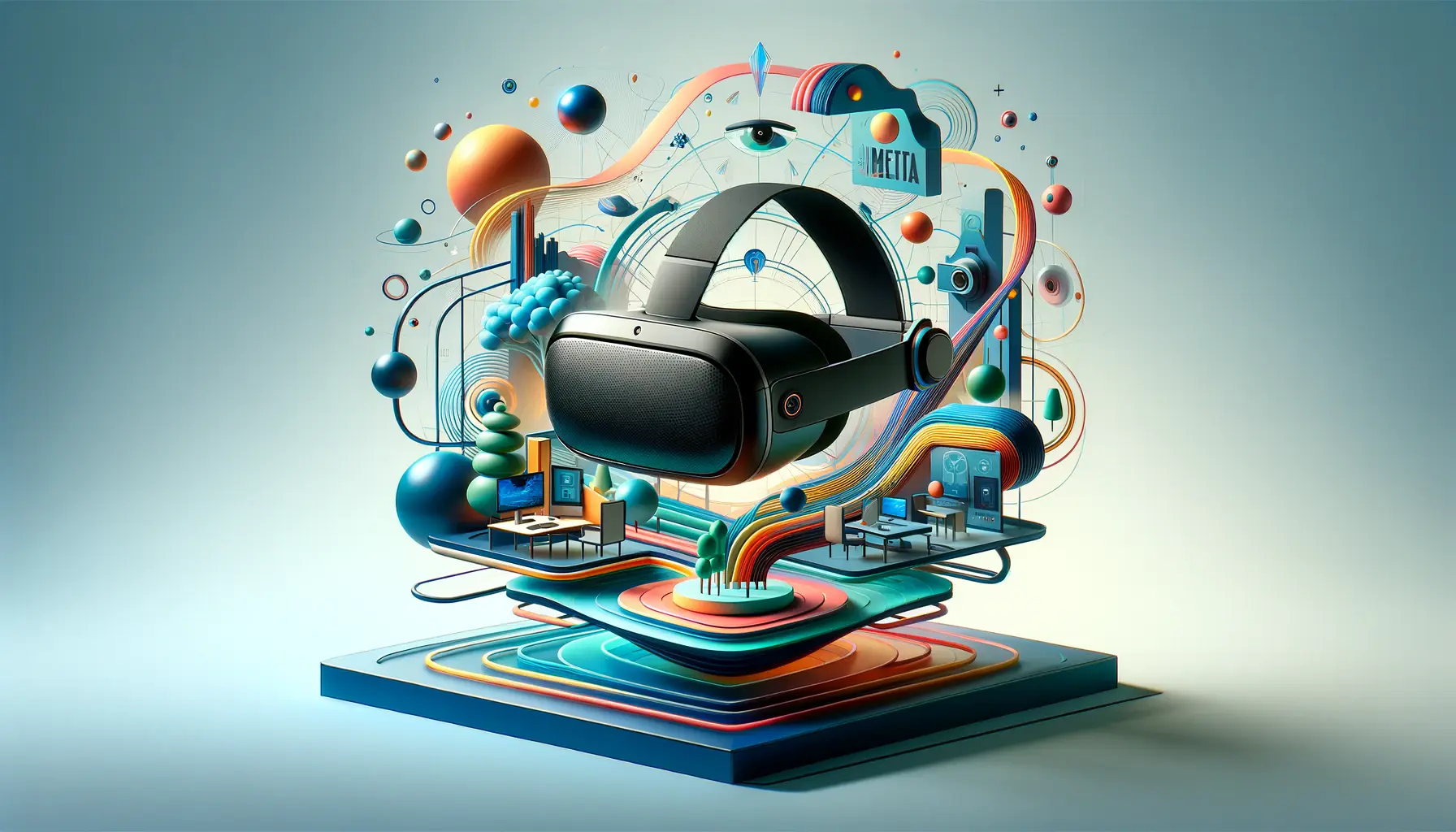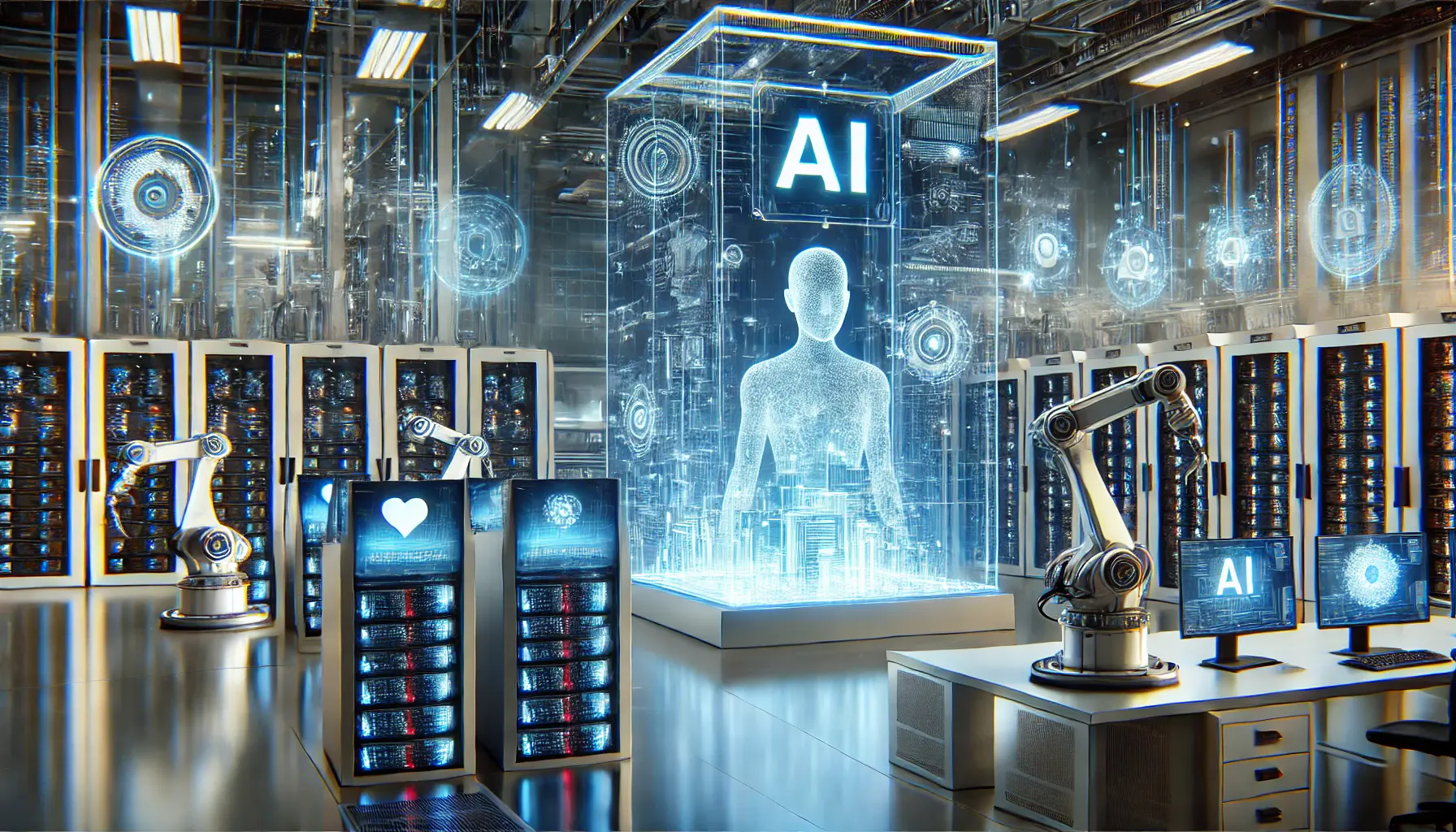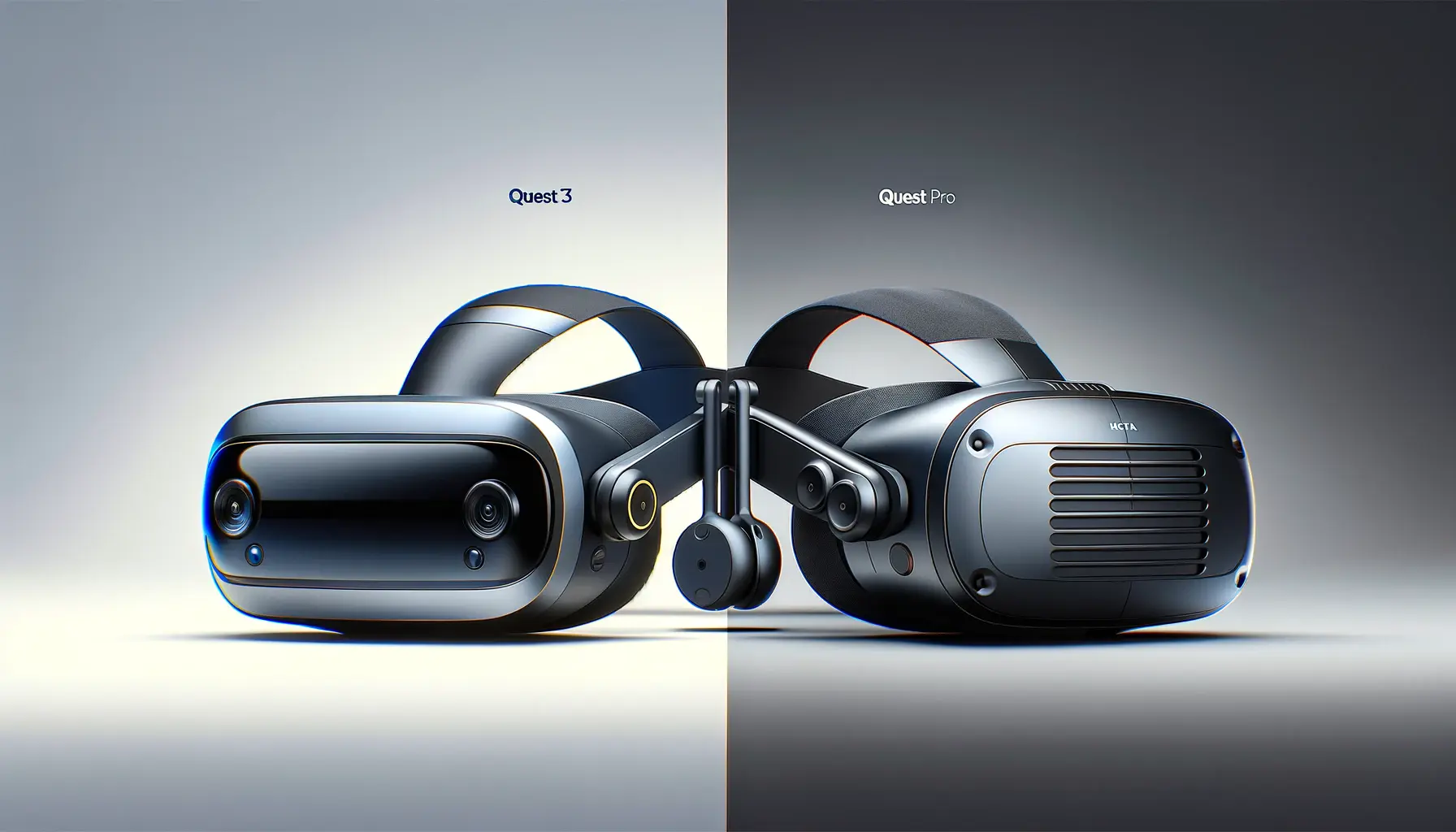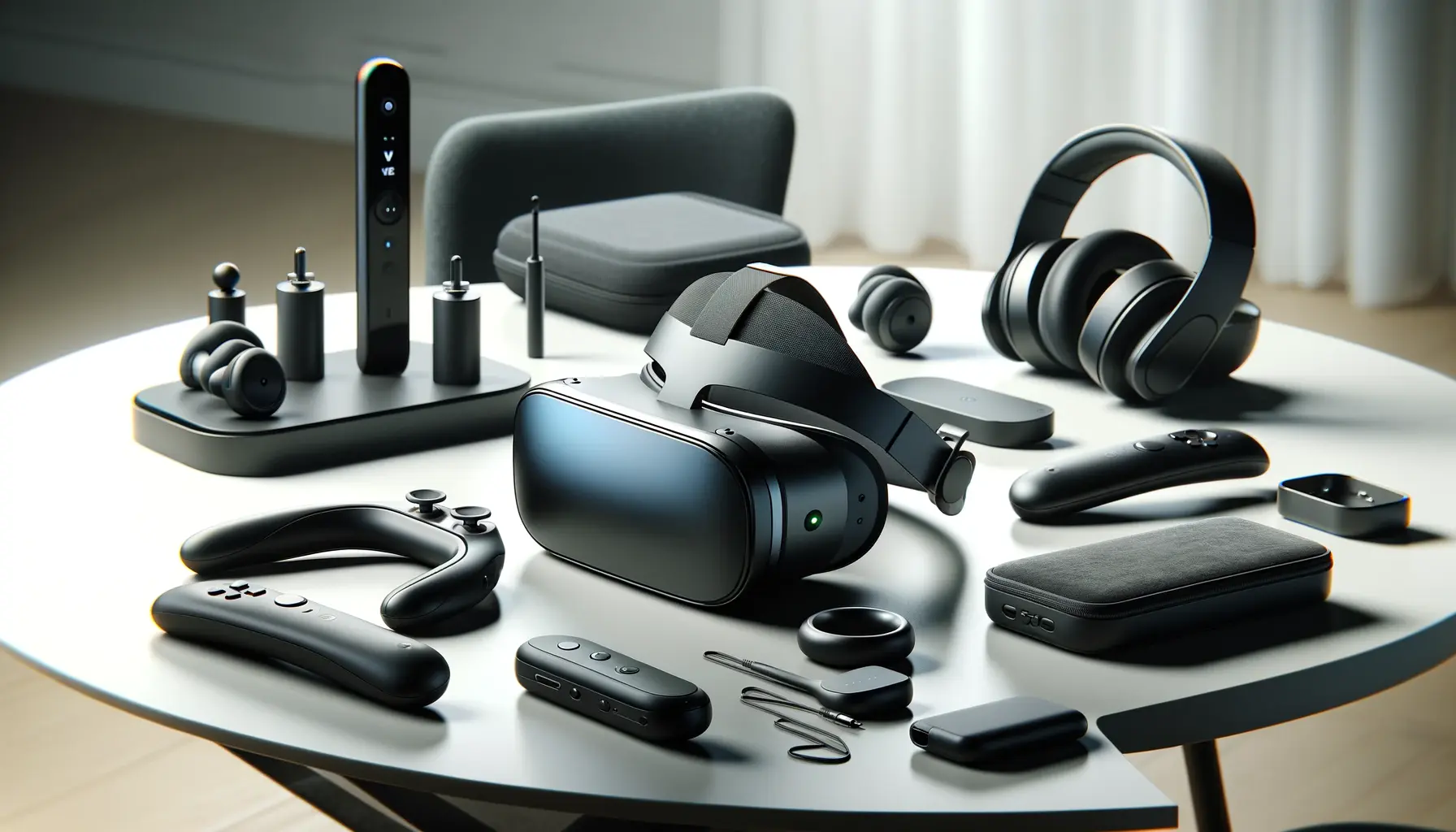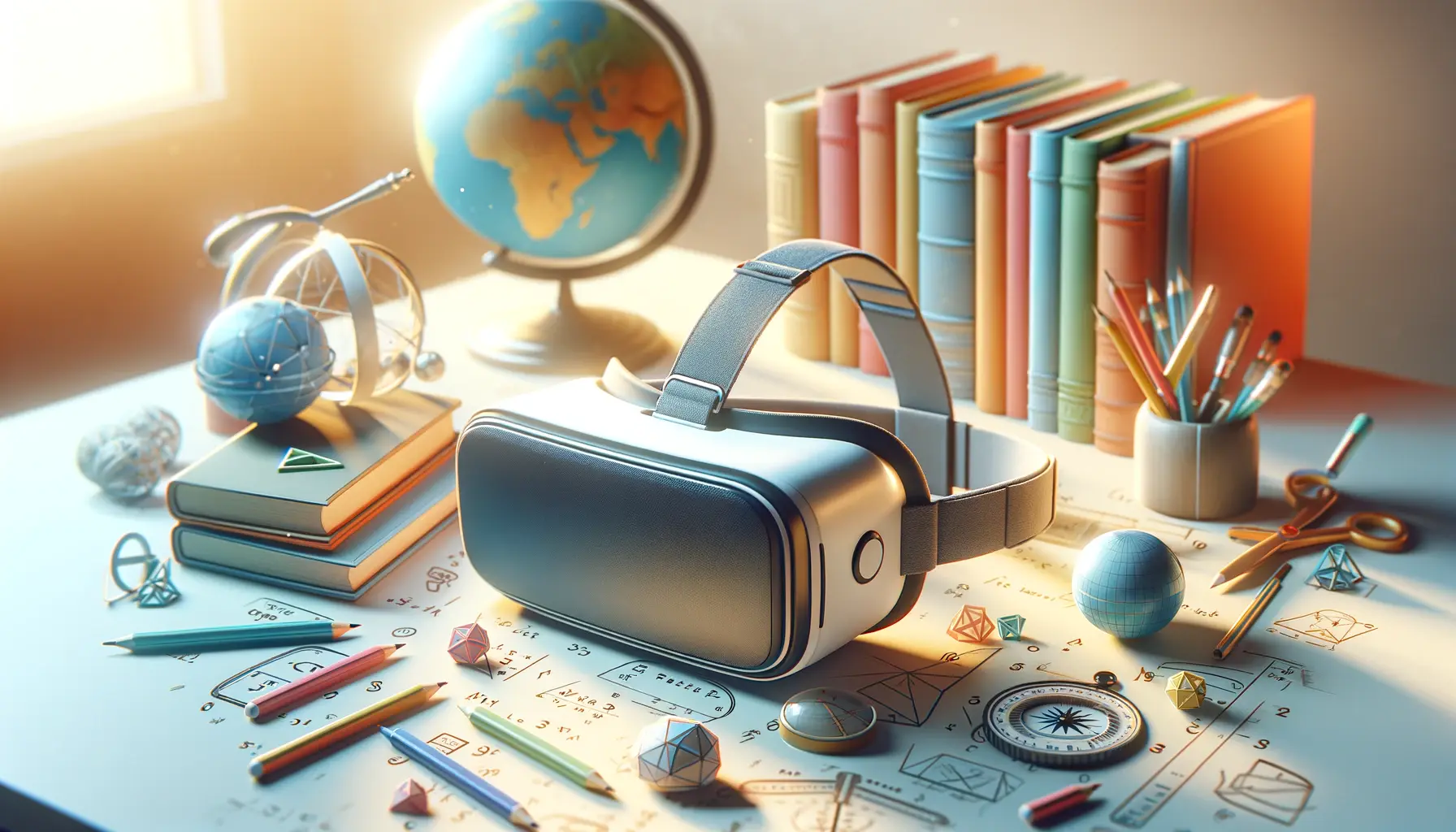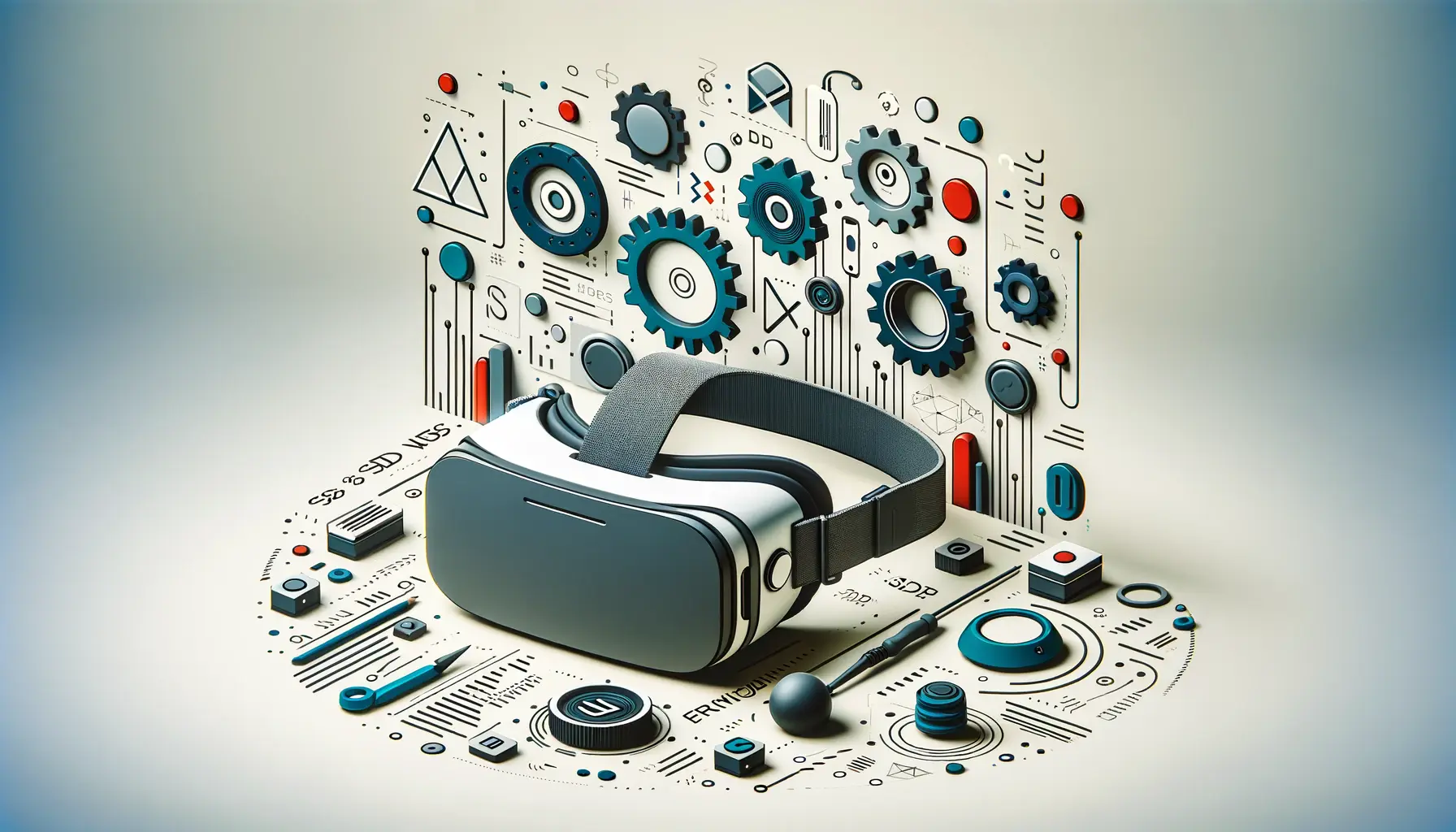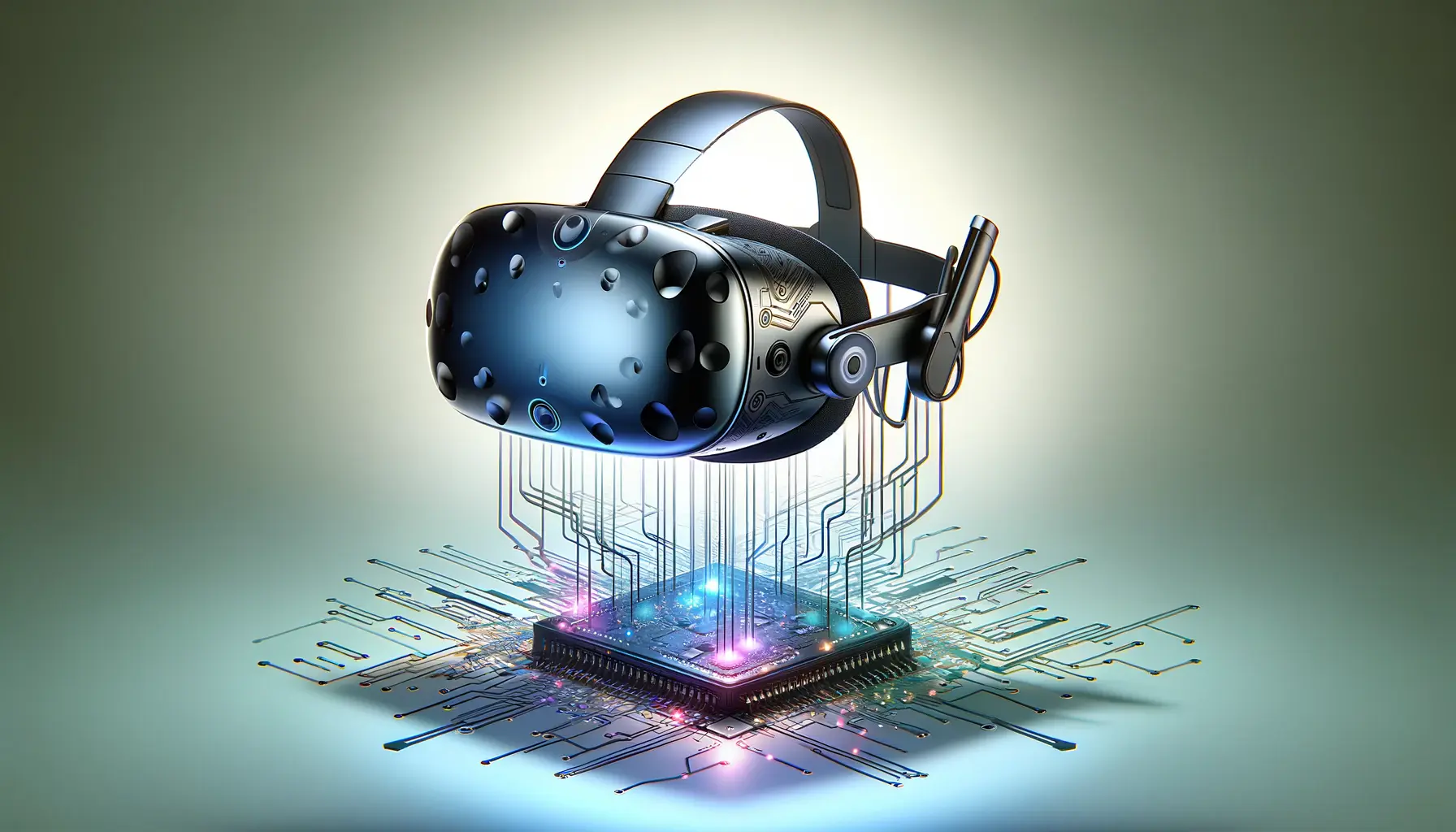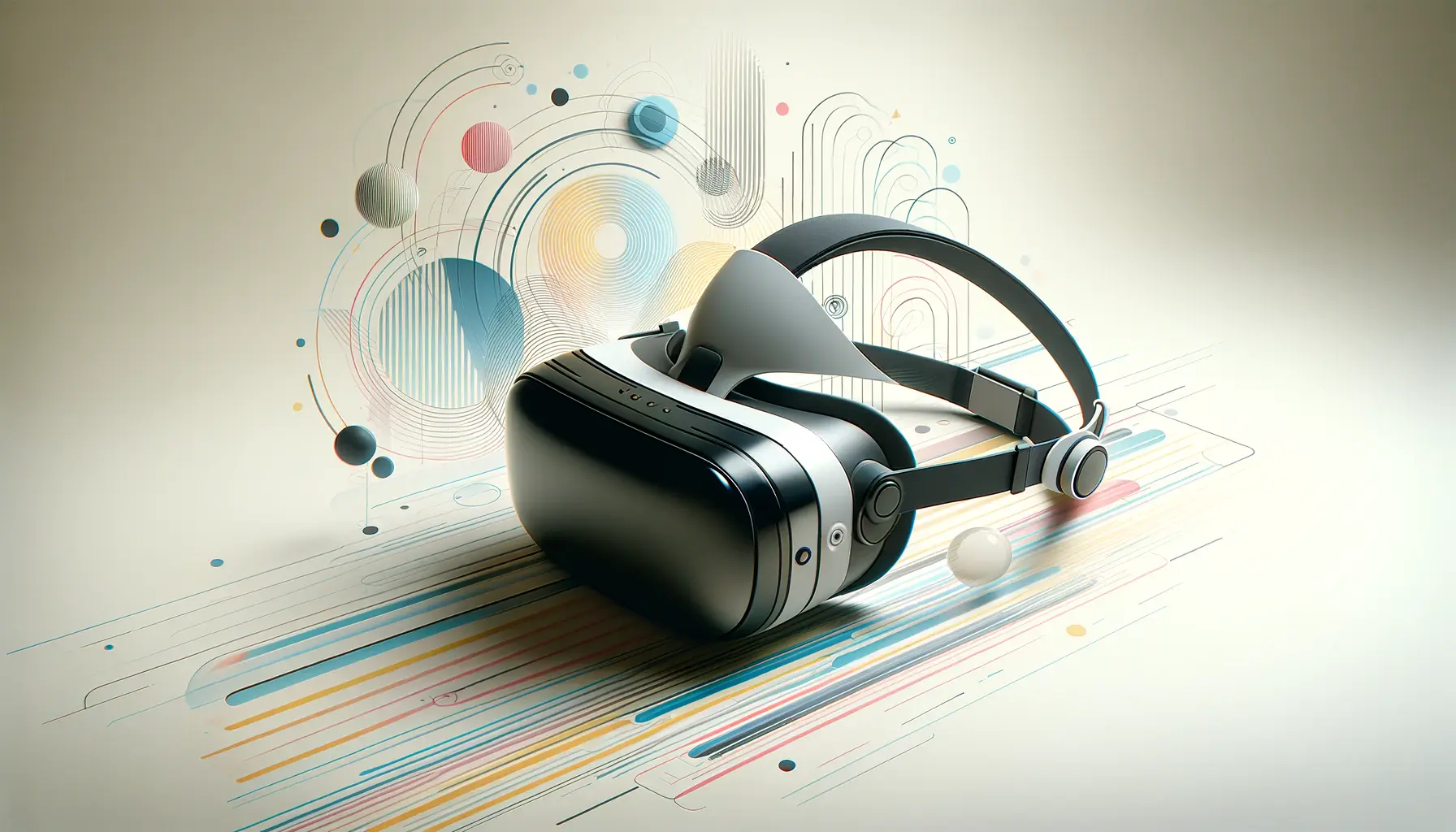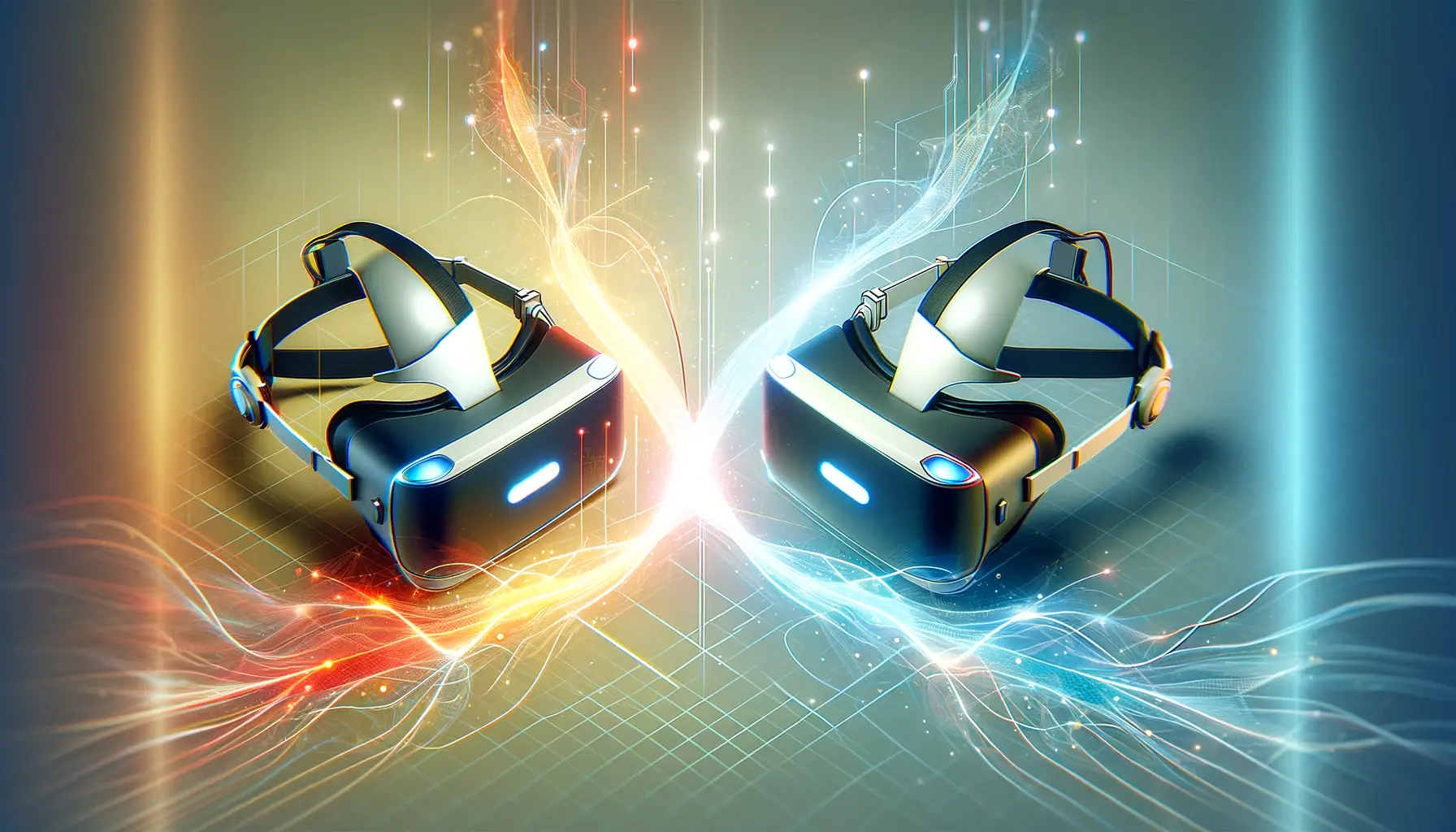The dawn of mixed reality (MR) has ushered in a new era of digital interaction, blurring the lines between the virtual and the real world.
At the forefront of this revolutionary technology is the Meta Quest 3, a device that promises to redefine our understanding and engagement with digital content.
This article delves into the intricate world of mixed reality through the lens of the Meta Quest 3, exploring its capabilities, innovations, and the immersive experiences it offers to users.
As the latest entrant in the realm of virtual reality (VR) headsets, the Meta Quest 3 stands out not just for its advanced hardware but for its commitment to mixed reality.
This commitment is evident in its design, features, and the ecosystem it fosters, aiming to create a seamless blend of digital and physical environments.
The Quest 3’s mixed reality technology enables users to interact with virtual objects and digital overlays as if they were part of their immediate physical space, setting a new standard for immersive technology.
- Introduction to Mixed Reality
- Exploring the Capabilities of Meta Quest 3
- Design and User Experience
- Enhancing Real-World Applications
- Community and Ecosystem Development
- Future Prospects and Innovations
- Challenges and Considerations
- Embracing the Future with Meta Quest 3
- Challenges Ahead
- The Road to Integration
- Meta Quest 3 Mixed Reality FAQs
Introduction to Mixed Reality
Mixed reality combines the best of both virtual and real worlds, creating environments where physical and digital objects coexist and interact in real time.
Unlike virtual reality, which immerses users in a completely virtual environment, or augmented reality (AR), which overlays digital information onto the real world, mixed reality offers a more integrated experience.
It allows for the manipulation of virtual objects with the perception of physical interaction, making it a groundbreaking tool for various applications.
The Meta Quest 3 leverages this technology to enhance gaming, education, and professional training, among other fields.
Its sophisticated sensors and tracking systems accurately map the user’s physical environment, allowing for the precise placement of digital objects within that space.
This capability not only enhances the realism of virtual experiences but also opens up new avenues for interaction and engagement with digital content.
Understanding the Technology Behind MR
At the heart of the Meta Quest 3’s mixed reality experience is a combination of cutting-edge technology.
Advanced optical sensors, spatial audio, and high-resolution displays work together to create a convincing blend of the real and the virtual.
These components are supported by powerful processing units capable of rendering complex 3D environments in real time, ensuring a smooth and immersive experience.
Furthermore, the Quest 3’s software plays a crucial role in its mixed reality capabilities.
It uses sophisticated algorithms to process input from its sensors, accurately tracking the user’s movements and the layout of their environment.
This allows for the dynamic integration of virtual content with the physical world, enabling users to interact with digital objects as if they were truly part of their surroundings.
The Meta Quest 3’s mixed reality technology marks a significant step forward in how we interact with digital content, offering a glimpse into the future of immersive technology.
Exploring the Capabilities of Meta Quest 3
The Meta Quest 3 is not just a piece of hardware; it’s a gateway to experiencing mixed reality in ways previously unimaginable.
Its capabilities extend far beyond traditional gaming, touching upon various aspects of daily life and professional fields.
Here, we explore the multifaceted features of the Quest 3 that make it a standout device in the realm of MR technology.
One of the most compelling features of the Meta Quest 3 is its ability to provide immersive gaming experiences.
The device offers a library of games designed specifically for mixed reality, allowing players to interact with virtual environments in a physically engaging way.
This not only enhances the gaming experience but also introduces a new level of physical activity to digital entertainment.
Gaming and Entertainment
- Immersive Gaming: With the Quest 3, gamers can step inside their favorite virtual worlds, interacting with the environment and characters in a way that feels real. This immersion is achieved through the device’s advanced tracking and rendering capabilities, which ensure a seamless blend of game and reality.
- Virtual Cinemas: The Quest 3 also transforms the way we consume media, offering virtual cinema experiences that place viewers in the center of their own private movie theater. This feature not only enhances the viewing experience but also adds a new dimension to how we engage with films and television shows.
Educational Applications
The Meta Quest 3’s mixed reality technology has significant implications for education and learning.
By creating interactive, 3D environments, students can explore complex subjects in a hands-on manner.
This immersive approach to learning has the potential to increase engagement and improve retention rates, making education a more interactive and enjoyable experience.
- Virtual Field Trips: Students can visit historical sites, museums, and even other planets without leaving the classroom. These virtual excursions offer a level of detail and interactivity that traditional field trips cannot match.
- Interactive Learning Modules: Complex subjects like anatomy, physics, and engineering can be taught using interactive 3D models. This allows students to explore and manipulate subjects in a way that textbooks simply cannot provide.
Professional Training and Development
The Quest 3 also finds application in professional training and development, where mixed reality can simulate real-world scenarios for training purposes.
This is particularly valuable in fields where hands-on experience is crucial, such as medicine, engineering, and aviation.
- Medical Training: Medical students can practice surgeries and diagnostic procedures in a risk-free virtual environment, gaining valuable experience before performing on real patients.
- Technical Skill Development: Engineers and technicians can use the Quest 3 to simulate repair and maintenance tasks, allowing them to hone their skills without the need for physical resources.
The versatility of the Meta Quest 3 in gaming, education, and professional training showcases the device’s potential to revolutionize how we interact with digital content across various aspects of life.
Design and User Experience
The design and user experience of the Meta Quest 3 are pivotal in its ability to deliver an unparalleled mixed reality experience.
From its ergonomic design to its intuitive user interface, every aspect of the Quest 3 has been crafted with the user in mind.
This focus ensures that the device is not only powerful but also accessible and enjoyable for a wide range of users.
At the core of the Quest 3’s design philosophy is a commitment to comfort and usability.
Recognizing that immersive experiences can span extended periods, the device features a lightweight, balanced build that reduces strain and fatigue.
This ergonomic design allows users to engage with mixed reality content without the distractions of discomfort, fostering longer and more enjoyable sessions.
Ergonomic Design
- Lightweight Construction: The Quest 3 is designed to be as light as possible, minimizing the strain on the user’s head and neck during prolonged use.
- Adjustable Straps and Padding: To accommodate a wide range of head sizes and shapes, the Quest 3 includes adjustable straps and soft padding, ensuring a comfortable fit for every user.
Intuitive User Interface
The user interface (UI) of the Meta Quest 3 plays a crucial role in its usability.
With a focus on simplicity and ease of navigation, the UI ensures that users can access and enjoy mixed reality content without prior technical knowledge.
This accessibility is key to broadening the appeal of mixed reality, making it a viable option for entertainment, education, and professional development for a diverse audience.
- Simple Navigation: The Quest 3’s UI is designed to be intuitive, with clear, easy-to-understand menus and controls. This simplicity allows users to focus on the content rather than the mechanics of operation.
- Gesture Controls: Leveraging advanced tracking technology, the Quest 3 enables users to interact with the UI through natural gestures. This not only enhances the immersive experience but also makes navigation more intuitive.
Immersive Audio Experience
Audio plays a critical role in the immersion of any mixed reality experience.
The Meta Quest 3 features spatial audio technology, which accurately simulates how sound behaves in a three-dimensional space.
This technology enhances the realism of virtual environments, making digital content feel even more lifelike.
- Spatial Audio: By replicating the way sound travels and interacts with the environment, the Quest 3’s audio system adds depth and realism to the mixed reality experience.
- Personalized Audio Settings: Users can adjust the audio settings to match their preferences, ensuring an optimal listening experience tailored to their needs.
The thoughtful design and user experience of the Meta Quest 3 highlight its role as a bridge between users and the vast potential of mixed reality, making advanced technology accessible and enjoyable for all.
Enhancing Real-World Applications
The Meta Quest 3’s mixed reality capabilities extend far beyond entertainment, offering transformative potential for real-world applications.
From healthcare and education to architecture and the arts, the Quest 3 is paving the way for innovative uses of mixed reality that can enhance, streamline, and revolutionize traditional practices.
By integrating digital content with the physical world, the Quest 3 allows for more interactive and immersive experiences in various professional fields.
This integration not only improves the way we interact with digital information but also opens up new possibilities for collaboration, creativity, and learning.
Healthcare Innovations
In the healthcare sector, the Meta Quest 3 is making strides in patient care, medical training, and therapeutic applications.
Mixed reality offers a unique platform for simulating medical procedures, providing patient education, and supporting rehabilitation efforts, making healthcare more accessible and effective.
- Simulated Medical Procedures: Medical professionals can use the Quest 3 to simulate surgeries and other procedures, offering a risk-free environment for training and practice.
- Rehabilitation: Mixed reality games and exercises designed for the Quest 3 can aid in physical rehabilitation, providing engaging ways for patients to complete their therapy sessions.
Architectural Visualization and Design
For architects and designers, the Meta Quest 3 offers a powerful tool for visualizing and interacting with 3D models of buildings and spaces.
This capability allows for a more intuitive design process and helps clients visualize projects in a fully immersive environment before construction begins.
- Interactive 3D Models: Designers can create detailed 3D models of architectural projects, which clients can explore using the Quest 3, offering a new level of understanding and engagement with proposed designs.
- Design Collaboration: Teams can collaborate in a shared mixed reality space, making real-time adjustments to designs and exploring different options together.
Education and Training
The educational potential of the Meta Quest 3 is vast, with applications ranging from K-12 education to professional training programs.
By making learning experiences more interactive and engaging, the Quest 3 can help improve comprehension and retention rates across a wide range of subjects.
- Interactive Learning Experiences: Students can explore historical events, scientific concepts, and mathematical theories in a dynamic and immersive way, making learning more engaging and effective.
- Professional Skill Development: The Quest 3 can simulate real-world scenarios for a variety of professions, providing hands-on training experiences that are both cost-effective and scalable.
The Meta Quest 3’s impact on real-world applications demonstrates the device’s versatility and the broad potential of mixed reality to enhance and transform traditional practices across industries.
Community and Ecosystem Development
The success and impact of the Meta Quest 3 extend beyond its technological capabilities, deeply rooted in the vibrant community and ecosystem that surrounds it.
This ecosystem encompasses developers, content creators, and users, all contributing to the growth and diversification of mixed reality experiences.
The development of this community is crucial for the continuous innovation and expansion of the Meta Quest 3’s offerings, ensuring that it remains at the cutting edge of immersive technology.
Meta has fostered a supportive environment for developers and creators, providing tools and resources that encourage the development of new apps, games, and experiences.
This collaborative approach has led to a rich library of content that caters to a wide range of interests and needs, making the Quest 3 a versatile platform for exploring mixed reality.
Supporting Developers and Creators
- Development Tools: Meta offers a suite of development tools designed to simplify the creation of mixed reality content, making it accessible for developers of all skill levels.
- Community Forums: A robust online community provides a platform for developers and creators to share knowledge, collaborate on projects, and offer support to one another.
Expanding the Content Library
The diversity and quality of content available on the Meta Quest 3 are directly influenced by the ecosystem’s health and vibrancy.
By nurturing a community of talented developers and creators, Meta ensures a steady stream of innovative and engaging content, keeping users coming back for more.
- Wide Range of Experiences: From games and educational tools to fitness apps and social platforms, the Quest 3 offers an array of content that appeals to different interests and lifestyles.
- User-Generated Content: The platform also supports user-generated content, allowing users to create and share their own mixed reality experiences.
Building a Social VR Platform
One of the most exciting aspects of the Meta Quest 3 is its potential to become a social VR platform, connecting users from around the world in shared virtual spaces.
This social dimension adds a new layer to the mixed reality experience, enabling collaboration, communication, and community building in ways that were previously impossible.
- Virtual Meetups: Users can meet, interact, and collaborate in virtual spaces, breaking down geographical barriers and fostering global connections.
- Live Events: The Quest 3 can host live events, such as concerts, conferences, and workshops, bringing together users in immersive virtual environments.
The development of the Meta Quest 3’s community and ecosystem is a testament to the device’s role in shaping the future of mixed reality, creating a dynamic platform for innovation, creativity, and connection.
Future Prospects and Innovations
The Meta Quest 3 represents a significant leap forward in mixed reality technology, but it is just the beginning of what’s possible.
As we look to the future, the potential for further innovations within the Quest ecosystem and the broader field of mixed reality is vast.
The continuous evolution of technology, coupled with growing interest from both developers and users, points to a future where mixed reality becomes an integral part of our daily lives.
Emerging technologies such as artificial intelligence (AI), machine learning, and advanced sensor technology will play a crucial role in shaping the next generation of mixed reality experiences.
These technologies promise to make mixed reality more immersive, intuitive, and accessible, opening up new possibilities for interaction, entertainment, and productivity.
Advancements in Immersion and Realism
- Enhanced Sensory Feedback: Future iterations of the Meta Quest may incorporate haptic feedback and other sensory technologies to enhance the realism of virtual environments, making digital interactions feel more tangible.
- Improved Visual and Audio Quality: Advances in display and audio technology will continue to improve the fidelity of mixed reality experiences, offering even more immersive and lifelike environments.
Accessibility and User Experience
As mixed reality technology evolves, so too will the focus on making it more accessible and user-friendly.
Future developments in the Meta Quest ecosystem are likely to emphasize ease of use, with more intuitive interfaces and streamlined processes for accessing and creating content.
- Gesture and Voice Controls: Future versions of the Quest may rely more heavily on natural user inputs, such as gesture and voice controls, reducing the reliance on physical controllers and making navigation more intuitive.
- Personalized Experiences: AI and machine learning could enable more personalized mixed reality experiences, adapting content and interfaces to individual user preferences and behaviors.
Broader Application and Integration
The potential applications for mixed reality are nearly limitless, extending far beyond gaming and entertainment.
As the technology matures, we can expect to see the Meta Quest and similar devices being used in a wider range of fields, from education and healthcare to manufacturing and urban planning.
- Workplace Collaboration: Mixed reality could revolutionize remote work and collaboration, offering virtual workspaces where teams can interact as if they were in the same room.
- Smart City Planning: Urban planners and architects could use mixed reality to visualize and simulate urban development projects, improving decision-making and public engagement.
The future of the Meta Quest 3 and mixed reality is bright, with ongoing innovations promising to expand the boundaries of what is possible, transforming how we interact with the digital and physical worlds alike.
Challenges and Considerations
While the Meta Quest 3 and mixed reality technology offer exciting possibilities, they also present unique challenges and considerations.
Addressing these issues is crucial for the continued growth and acceptance of mixed reality as a mainstream technology.
From technical limitations to ethical concerns, understanding these challenges is key to navigating the future of immersive digital experiences.
The advancement of mixed reality technology brings with it questions of privacy, data security, and the ethical use of immersive media.
As developers and users explore the vast potentials of the Meta Quest 3, it’s important to consider the implications of blending digital content with the real world, ensuring that this integration benefits society as a whole.
Privacy and Data Security
- User Data: The collection and use of personal data in mixed reality environments raise significant privacy concerns. Ensuring the security of user data and providing transparent data practices are essential for maintaining user trust.
- Surveillance Concerns: The potential for constant environmental and user monitoring through devices like the Quest 3 highlights the need for strict privacy controls and user consent mechanisms.
Technical Limitations and Accessibility
Despite rapid advancements, mixed reality technology still faces technical limitations that can affect the quality and accessibility of experiences.
Overcoming these challenges is crucial for the widespread adoption of devices like the Meta Quest 3.
- Hardware Requirements: High-quality mixed reality experiences require powerful hardware, which can be expensive and out of reach for many users. Making the technology more affordable and accessible remains a significant challenge.
- Content Creation: Developing engaging and high-quality mixed reality content requires significant resources and expertise. Encouraging more creators to enter the space is essential for the diversity and growth of the ecosystem.
Ethical Use and Social Impact
The immersive nature of mixed reality also raises questions about its impact on social behavior, mental health, and the distinction between digital and physical realities.
Ensuring that mixed reality technology is used in ways that are beneficial and ethical is paramount.
- Real-world Isolation: The potential for mixed reality to lead to social isolation is a concern, highlighting the need for balanced and healthy usage patterns.
- Impact on Children: The effects of immersive technology on children’s development and well-being are still being understood, necessitating careful consideration and guidelines for use.
Ignoring the challenges and considerations associated with mixed reality technology could hinder its development and acceptance. Addressing these issues head-on is essential for realizing the full potential of the Meta Quest 3 and similar devices in a responsible and beneficial manner.
Embracing the Future with Meta Quest 3
The journey through the capabilities, design, and potential of the Meta Quest 3 reveals a landscape where mixed reality is not just an innovation but a revolution in digital interaction.
As we’ve explored the various dimensions of the Meta Quest 3, from its immersive gaming experiences to its transformative applications in education and professional training, it’s clear that this device is at the forefront of merging the digital with the physical in ways previously unimaginable.
The Meta Quest 3 represents a significant milestone in mixed reality technology, offering a glimpse into a future where our digital and physical realities are intertwined.
This device not only showcases the potential for immersive entertainment and gaming but also highlights the broader implications for education, healthcare, and various professional fields.
By providing a platform for innovative applications and fostering a vibrant ecosystem of developers and creators, the Meta Quest 3 is paving the way for a future where mixed reality experiences are an integral part of our daily lives.
Challenges Ahead
However, the path forward is not without its challenges.
Privacy concerns, data security, and the ethical implications of immersive technology are issues that require careful consideration and proactive measures.
Additionally, addressing technical limitations and ensuring accessibility will be crucial for the widespread adoption of mixed reality technology.
Despite these challenges, the potential of the Meta Quest 3 and mixed reality as a whole offers a compelling vision of the future—one where technology enhances our lives in profound and meaningful ways.
The Road to Integration
As we stand on the brink of this new era, the role of devices like the Meta Quest 3 in shaping our interaction with technology cannot be overstated.
With each advancement, we move closer to a world where the boundaries between the digital and the physical blur, creating new opportunities for learning, entertainment, and human connection.
The journey of the Meta Quest 3 is just beginning, and its impact on our lives and society promises to be transformative.
In conclusion, the Meta Quest 3’s exploration of mixed reality opens up a world of possibilities that extend far beyond the confines of traditional digital experiences.
As we navigate the challenges and embrace the opportunities, the future of mixed reality shines brightly, promising a more immersive, interactive, and integrated world.
The Meta Quest 3 is not just a window into this future but a key that unlocks the door to endless possibilities, inviting us all to step through and explore what lies beyond.
Meta Quest 3 Mixed Reality FAQs
Explore the most common inquiries about the Meta Quest 3 and its mixed reality capabilities.
Mixed reality on Meta Quest 3 blends virtual content with the real world, allowing users to interact with digital objects as if they were physically present.
Meta Quest 3 enhances mixed reality with full-color passthrough, high-resolution displays, and advanced processing for a seamless, immersive experience.
Yes, Meta Quest 3 allows recording and casting of mixed reality experiences, enabling users to share their virtual interactions with the real world.
Key features include advanced mixed reality capabilities, ergonomic design, intuitive controls, and a vast library of content for immersive experiences.
Yes, its mixed reality technology offers innovative ways for interactive learning and immersive educational experiences in various subjects.
Meta Quest 3 provides realistic simulations and interactive training environments, enhancing skill development and professional learning.
Meta Quest 3 offers improved mixed reality experiences, faster processing, higher resolution, and enhanced user comfort compared to earlier versions.
Yes, it supports virtual meetups and live events, enabling users to interact and connect in shared virtual spaces for a social VR experience.
